2014 Porsche Cayman S Vs 2013 Audi TT-RS

This isn’t the Porsche 911 GT3 versus the Audi R8 V10 Plus. (Note to self: test the 911 GT3 vs. Audi R8 V10 Plus, because that sounds f#%king awesome.)
But this head-to-head is quite possibly the next best thing, and the good news is you might even be able to afford one of these sweet little German sports cars. Sure, the Porsche Cayman S isn’t exactly chump change with a starting price of $64,795, nor is the TT-RS at a slightly less hurtful $58,095, but make a few sacrifices (like having children, or sending them to college) and you could reach for one. Go on, you know you want to.
And really, it’s a stretch well worth making, because both offer a pant-shrinking combination of seductive sheet metal and ego-enhancing performance. Plus you get a few very important consonants from each, the Cayman having that all-important S added to its name along with a 325 hp naturally-aspirated 3.4-liter flat-6 bolted to the back of the seats, while the Audi gets an R in front of its S and a carbon-topped 2.5-liter straight-5 under the hood that’s boosted to the tune of 360 hp.
Get the Flash Player to see this player.
On paper the TT-RS looks to have a grip advantage, too, thanks to its quattro all-wheel drive system, plus this angry-looking Audi has 68 lb-ft of torque more than the curvaceous Porsche. But the Cayman S’s mid-engine balance and ultra-quick PDK dual-clutch gearbox could well tip the scales in its direction around the AutoGuide test track.
Options? We Talkin’ About Options?
But before getting to the track action, lets get the obligatory whining about the price of options on the Porsche out of the way. It’s the best known cash grab in the business, and yet somehow you just can’t resist ticking the box for the $2,370 Sport Chrono Package or the Sport Design Steering Wheel, can you? They lend a more upscale look and Porsche says the Sport Chrono package saves a little time in sprinting to 60 mph..
Our particular test car made very good use of the countless credit-testing options available to Porsche buyers, having been treated to almost $15,000 in extras. This brings it up to the “we’re getting dangerously close to 911 money” price of $79,725 including destination charge, but you do get that automagic gearbox, Porsche Active Suspension Management (PASM) and Porsche Torque Vectoring (PVT) in the process, all of which should not only reduce lap times but also make its performance more accessible to the average driver.
There are far fewer options available to TT RS owners, three pedals and a manual 6-speed being mandatory in this market. Still, our test mule does have an extra $10,000 in options, its out-the-door price inflating to $64,770 thanks to add-ons like the tech package ($3500) and titanium sport exhaust package (which sounds as spectacular as its $2700 price tag implies). Not that you can option out your own TT RS anyway, since its limited production run has come to an end (the RS5 coupe being a rather tasty alternative for similar money).
Opposites Attack
Despite both being produced under the VAG umbrella (sounds dirty, I know), these two speed machines couldn’t go about their business any differently. The nose-heavy Audi, with 61% of its weight up front, tips the scales at a very reasonable 3,306 lbs despite its Haldex all-wheel drive system and iron engine block. Generous use of aluminum has kept the flab in check, and unlike the two-seater Porsche, the TT RS has back seats that could carry small humans in a pinch or, more relevantly, fold down so that the rear hatch becomes a generous cargo hold.
Given its weight distribution and AWD power delivery, you’d be forgiven for assuming that the TT RS understeers when driven hard into corners, and yes, it will plough offline if you overcook corner entry, but judged properly the Audi’s magnetic dampers and overall suspension package do an excellent job controlling body motion and managing grip once you aim it at an apex. It’s not nearly as pointy as the Porsche, but it’s no slouch in the corners either.
Jump into the Cayman S and it has a totally different look and feel to it, the seating position being lower and more reclined than in the Audi. Its compact rear-wheel drive layout and aluminum rear structure also mean you’re buckled to a remarkably lightweight machine, with a curb weight of just 2,976 lbs. And with the engine in the middle, 54% of its mass is over the rear wheels, giving it superb balance on corner entry and surprising traction once you transition back onto the go-pedal.
Its 7-speed PDK transmission may have been designed in collaboration with the Long Island Medium, because it downshifts with a telepathic quality that’s eerie (I was tempted to line my helmet with tinfoil, just to test the theory that this transmission can actually read minds). It’s fun playing with the flappy paddles mounted to the steering wheel, and they do give you a greater sense of control, but leave it in full ‘auto’ mode and you won’t give up a millisecond of performance, that’s for sure.
Tracking the Differences
It may be spotting the Audi a serious chunk of torque, but because of its lower curb weight and PDK magic, it’s the Cayman that feels faster on the back end of the straight-aways, a sensation the in-car data confirmed (Vmax down the front straight of 108.7 mph in the Cayman and 105.0 mph in the TT). The Porsche’s naturally aspirated flat-6 also has a wonderful rev-happiness to it, pulling strongly to its 7,800 rpm redline while producing a melodically metallic soundtrack.
The in-car data also confirmed the sensation of exceptional cornering ability, where the Cayman S consistently generating 1.2g of cornering force and peaked at 1.24g while entering the esses (Turn 4). The onboard alphabet soup of PASM and PTV worked quietly and effectively in the background with stability control turned off and Sport+ mode engaged, the net effect being a very happy driver who found it remarkably easy to dial in just the right amount of slip angle while the computers figured out how much torque to send to each of the rear wheels. Despite all the onboard technology, the Cayman always felt completely natural to drive at the limit, showing a willingness to slide around corners at yaw angles that typically send e-nannies into spastic responses that kill the fun.
Meanwhile, behind the wheel of the Audi TT RS, the party doesn’t really start until you get on the gas mid-corner. But once you do, its turbocharged 5-banger and quattro system launches you forward with the sort of urgency and character you’d expect from a WRC rally car. In fact, as we learned last year when first testing the TT RS, it’s actually happiest when being treated with a bit of Walter Rorhl flare, pitching it into corners to get the front end turned in early and then stomping on the throttle so that the turbo spools up quickly and then the all-wheel drive system flings you out onto the straight.
And this isn’t just the fun way to get the Audi around the track; the stopwatch also proved it was the faster way.
Surprising Pace
Not fast enough to truly challenge the blistering speed of the Cayman S, though. In fact, the TT RS was a second off its own pace from a year ago, with a best lap of 1-minute 23.423-seconds, and a whisker over 2-seconds slower than the Porsche’s best lap of 1-minute 21.286-seconds.
That’s a surprising gap given the Audi’s power and AWD grip advantage, but the Cayman S proved that combining lightness with supreme handing balance is a potent combination around a road course. In fact, the in-car data confirms that the Cayman was able to transition back to full throttle much earlier than the TT RS thanks to is amazing willingness to change direction, resulting in higher corner exit speeds and those aforementioned superior straightaway speeds.
Braking played a huge role too, though, where the Cayman’s superior weight distribution and low mass meant it could brake later and make better overall use of its front tires while slowing. Both cars have excellent brake feel (the Audi did start to suffer from some brake fade after a few hot laps), but everything felt easy and natural and low stress in the Cayman S, like dancing with a professional who leads you effortlessly to the next move. In the TT RS, it’s more like throwing elbows and head butts in a mosh pit, where pounding on the brakes, pitching it corners, and smashing the gas pedal delivered the best lap times.
The Verdict: A Mid-Eengine Masterpiece
As much fun as it is hooning around in the TT RS like a rally car driver with an anger management problem, the Cayman S really is the far more rewarding and enjoyable car to drive at the limit. Its also shockingly fast, its lap time rivaling far more powerful machines, outpacing the Ford Mustang Boss 302 by a few tenths and the Jaguar F-Type S by close to a second.
SEE ALSO: AutoGuide Test Track Fastest Lap Times
Regardless of lap times, it’s the Cayman’s wonderfully balanced driving dynamics that make it such a captivating machine. Never once did the Cayman feel like it disagreed with the directions it was being given, instead offering an unwaivering willingness to do as its told, even when that involved some pretty epic drifts at 80 mph.
Compare Specs
| Vehicle | 2014 Porsche Cayman S | Advantage | 2013 Audi TT-RS |
|---|---|---|---|
| Engine | 3.4L Flat-6 | - | 2.5L I5 Turbo |
| Horsepower | 325 hp | TT-RS | 360 hp |
| Torque | 272 lb-ft | TT-RS | 343 lb-ft |
| Transmission | 7-speed auto | Cayman S | 6-speed manual |
| 0-60 | 4.4 sec. | TT-RS | 4.1 sec. |
| Cub Weight | 2,954 lbs | Cayman S | 3,306 lbs. |
| Max lateral Gs | 1.24g | Cayman S | 1.15g |
| Max Braking Gs | 1.07g | Cayman S | 0.99g |
| Max Speed | 108.7 mph | Cayman S | 105 mph |
| Lap Time | 121.286 sec. | Cayman S | 123.423 sec. |
| Price | $64,795 | TT-RS | $58,095 |
| Price as Tested | $84,170 | TT-RS | $64,770 |
And the thing is, the Cayman’s mid-engine balance is so confidence inspiring, overdriving it into corners simply resulted in joyful moments of opposite lock, rather than pant-wetting moments of terror. Getting the Cayman back inline is just a flick of the wrist or a lift of the throttle away, making it the most engaging and rewarding driving companion I’ve had at our test track this year. It’s spectacular and I want one. Badly.
The TT RS is definitely an item of desire as well, though, less so for its at-the-limit driving dynamics and more for the aggressiveness of its power delivery. It’s actually quite startling the first time you stomp on the gas in this angry little beetle; you really can’t help but grin and do it again…a lot. As hard as it tries to obliterate the pavement beneath it, the Audi certainly isn’t at the same level as the Cayman when turning the wheel, though I’m sure the TT RS will dispatch slow-moving traffic or winding roads with brutal efficiency.
You really can’t lose with either of these German rocketships, but as a ground-up exercise in precision, speed and control, the 2014 Porsche Cayman S is virtually peerless, it’s also one of the best looking car for sale today, at any price.
2014 Porsche Cayman S, 2013 Audi TT-RS
LOVE IT
- Quite possibly the best handling car on the planet
- Quite possibly the best looking car on the planet
- Telepathic PDK makes me forget all about manual gearboxes
- Tremendous sensation of acceleration
- Fabulous engine noises
- Aggressive, bold look
LEAVE IT
- I can’t afford one
- Porsche doesn’t take small children as credit
- 20-inch wheel option make the brakes look a bit undersized
- Nose-heavy design asks a lot of the front tires
- Interior could use a bit more ‘specialness’ given the RS badge
- No longer for sale!

Some say he's closely related to Bigfoot and that he's a former Canadian Touring Car Champion. All we know is he's the AutoGuide Stig! A thesis defense away from being your intellectual superior he's a professor of vehicle handling dynamics. The part-time touring car and time attack racer is faster (much faster) than your average auto journalist.
More by Dave Pratte
















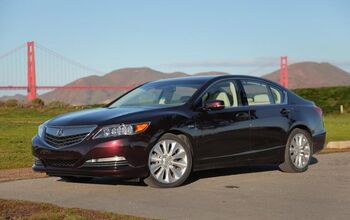

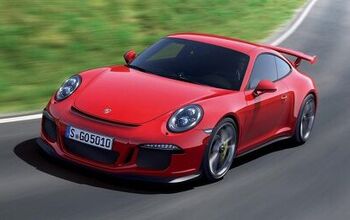
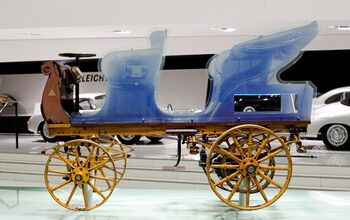
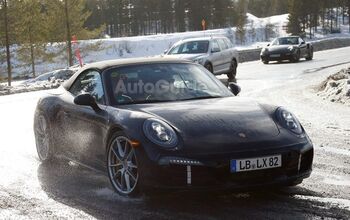

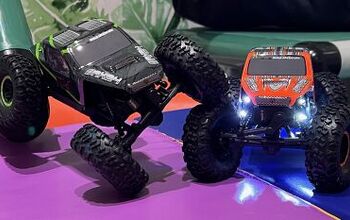



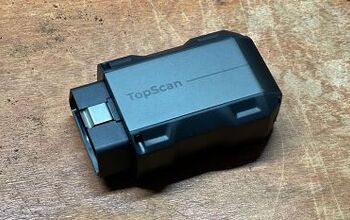



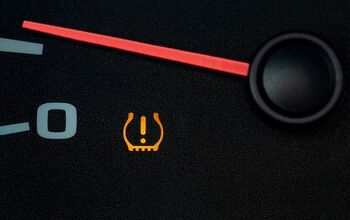
Comments
Join the conversation